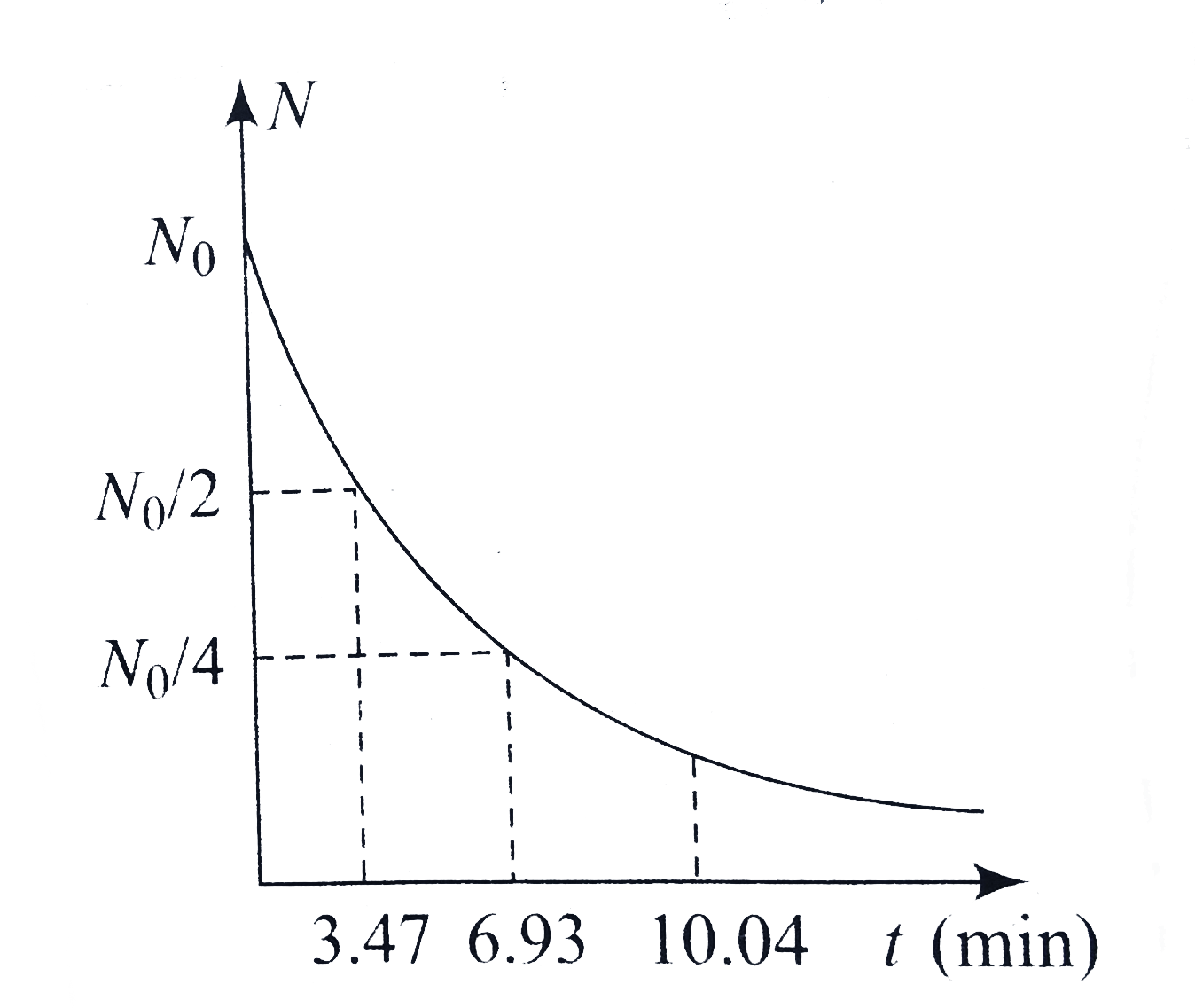A radioactive sample decays through two different decay processes α-decay and β-decay. Half-life time for α−decay is 3h and half-life time for β−decay is 6h. What will be the ratio of number of initial radioactive to the number of nuclei present after 6h?.
The correct Answer is:8
To solve the problem, we need to find the ratio of the initial number of radioactive nuclei to the number of nuclei present after 6 hours, considering both alpha and beta decay processes.
1. Identify the Given Data:
- Half-life for alpha decay, Tα=3 hours
- Half-life for beta decay, Tβ=6 hours
- Time, t=6 hours
2. Calculate the Decay Constants:
The decay constant λ is related to the half-life T1/2 by the formula:
λ=ln(2)T1/2
- For alpha decay:
λα=ln(2)3 hours
- For beta decay:
λβ=ln(2)6 hours
3. Calculate the Effective Decay Constant:
The effective decay constant λeffective for both processes is given by:
λeffective=λα+λβ
Substituting the values:
λeffective=ln(2)3+ln(2)6
To add these fractions, we need a common denominator:
λeffective=2ln(2)6+ln(2)6=3ln(2)6=ln(2)2
4. Use the Decay Law:
The number of nuclei remaining after time t is given by:
N=N0e−λeffectivet
Substituting t=6 hours:
N=N0e−(ln(2)2)(6)=N0e−3ln(2)=N0(eln(2))−3=N0(12)3=N0⋅18
5. Calculate the Ratio:
The ratio of the initial number of radioactive nuclei N0 to the number of nuclei present after 6 hours N is:
Ratio=N0N=N0N08=8
Final Answer:
The ratio of the number of initial radioactive nuclei to the number of nuclei present after 6 hours is 8.
---
- Half-life for alpha decay, Tα=3 hours
- Half-life for beta decay, Tβ=6 hours
- Time, t=6 hours
The decay constant λ is related to the half-life T1/2 by the formula:
λ=ln(2)T1/2
λα=ln(2)3 hours
- For beta decay:
λβ=ln(2)6 hours
The effective decay constant λeffective for both processes is given by:
λeffective=λα+λβ
λeffective=ln(2)3+ln(2)6
λeffective=2ln(2)6+ln(2)6=3ln(2)6=ln(2)2
The number of nuclei remaining after time t is given by:
N=N0e−λeffectivet
N=N0e−(ln(2)2)(6)=N0e−3ln(2)=N0(eln(2))−3=N0(12)3=N0⋅18
The ratio of the initial number of radioactive nuclei N0 to the number of nuclei present after 6 hours N is:
Ratio=N0N=N0N08=8
The ratio of the number of initial radioactive nuclei to the number of nuclei present after 6 hours is 8.
Topper's Solved these Questions
- NUCLEAR PHYSICSBOOK - CENGAGE PHYSICS ENGLISHCHAPTER - NUCLEAR PHYSICSEXERCISE - Integer
6 Videos
- NUCLEAR PHYSICSBOOK - CENGAGE PHYSICS ENGLISHCHAPTER - NUCLEAR PHYSICSEXERCISE - Fill In The Blanks
5 Videos
- NUCLEAR PHYSICSBOOK - CENGAGE PHYSICS ENGLISHCHAPTER - NUCLEAR PHYSICSEXERCISE - Single Correct Option
182 Videos
- MISCELLANEOUS VOLUME 5BOOK - CENGAGE PHYSICS ENGLISHCHAPTER - MISCELLANEOUS VOLUME 5EXERCISE - Integer
12 Videos
- PHOTOELECTRIC EFFECTBOOK - CENGAGE PHYSICS ENGLISHCHAPTER - PHOTOELECTRIC EFFECTEXERCISE - Integer Type
4 Videos
Similar Questions
Knowledge Check
A fraction f1 of a radioactive sample decays in one mean life, and a fraction f2 decays in one half life. Then
Af1>f2Bf1<f2Cf1=f2Deither of (a),(b ) or (c ) depending on the values of the mean life and half life.
The half life of radioactive substance is T. Then the fraction of the substance that has decayed in time t is-
View SolutionThe decay constant of a radioactive substance is 0.693 per minute. What will be the half-life and mean life of it?
View SolutionA radioactive sample undergoes decay as per the following gragp. At timet=0, the number of undecayed nuclei is N0. Calculate the number of nuclei left after 1h.
 .
.
View SolutionHow many atoms decay in one mean life time of a radioactive sample-
View SolutionIn radioactive decay process, the negatively changed emitted β−particle are
View SolutionA radioactive sample contains two different types of radioactive nuclei. A-with half-time 5 days and B-type with half life 30 days. Initially the decay rate of A-type nuclei is 64 times that of B type of nuclei . Their decay rates will be equal when time is 9n days. Find the value of n.
View SolutionWhat are the respective number of α and β-particles emitted in the following radioactive decay?
View Solution

